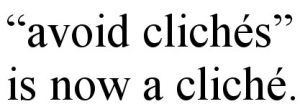
In 2001, author Elmore Leonard published a column in the New York Times in their “Writers on Writing” series that contained 10 rules for writing fiction. Now the subject of a book, the column was equal parts entertainment and sincere advice for those who write fiction and do it poorly. Reading Elmore’s column has motivated me to write Trade Secrets’ “10 Rules for Writing Nonfiction.”
- Know what’s important. What is informative, controversial, unique, entertaining or other exceptional about the story? Write about that.
- Tell the real story, not your story. Too many writers of non-fiction try to inject their own points of view, preconceptions or prejudices into a story. Approach every topic with an open mind, and let the facts guide the writing.
- Quote (mostly) accurately and in context. You don’t have to quote someone verbatim as long as you’re close and convey the same meaning, unless it’s a famous quote. And don’t use quotes out of context.
- Spell names correctly. The first question every journalist should ask someone they’re interviewing: “Please spell your name for me.” Even if it’s Glen Smith, it might be Glenn Smythe.
- Don’t use clichés. This is so often advised, that “avoid clichés” is now a cliché.
- Use short sentences. Most nonfiction is written at an eighth grade reading level. While long, complex sentences are fine for creative writing class, they don’t work when you’re trying to convey information quickly and accurately. Likewise…
- Use short paragraphs. Nothing turns off a reader more than an imposing block of text staring them in the face. Three to four sentences, max. Then hit enter.
- Be careful with your punctuation. There isn’t much room for the exclamation point in nonfiction (or in fiction, for that matter). Unless you’re being purposely glib to set a tone or be interesting, then stick with periods.
- And speaking of being interesting, be interesting. No one says nonfiction has to be dull or boring just because it’s factual and not fanciful.
- The last two rules are the same as Leonard’s: Try to leave out the part that readers tend to skip. You need to figure out what that is, and get rid of it. It may be pointless exhibition, or it may be a statement of fact that we all know (e.g., “The current recession has been tough for small businesses.”).
And Leonard’s One Rule to Rule Them All: If it sounds like writing, rewrite it.
